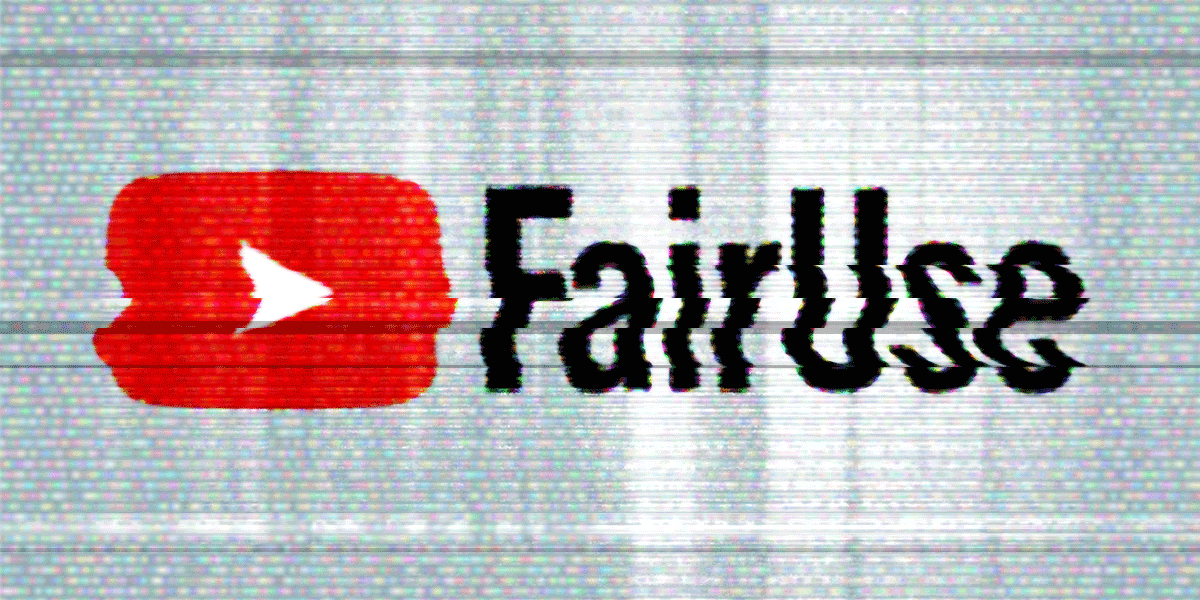YouTube recently released a transparency report on the status of copyright claims for the first half of 2021. It says it will release these numbers biannually from now on. We applaud this move towards transparency, since it gives researchers a better look at what’s happening on the world’s largest streaming video platform. What is less welcome is the spin.
The major thrust of this report is to calm the major studios and music labels. Those huge conglomerates have consistently pushed for more and more restrictions on the use of copyrighted material, at the expense of fair use and, as a result, free expression. YouTube has plenty of incentives to try to avoid the wrath of these deep-pocketed companies by showing how it polices allege copyright infringement and generates money for creators.
The secondary goal of the report is to claim that YouTube is adequately protecting its creators. That rings hollow, since every user knows what it’s like to actually live in this ecosystem. And they have neither the time nor money to lobby YouTube for improvements. Worse, as a practical matter, YouTube is the only game in town, so they can’t make their anger heard by leaving.
Here are the big numbers YouTube just released for the first half of 2021:
- 772 million copyright claims were made through Content ID,
- 99% of all copyright claims were Content ID claims, meaning only 1% were DMCA or other forms of complaint
- 6 million removal requests were made with YouTube’s Copyright Match Tool
- Fewer than 1% of Content ID claims were disputed
- When they were, 60% of the time the dispute was resolved in favor of those contesting the claims
YouTube argues that by transferring large sums to music labels and movie studios from internet creators, its ecosystem is, to borrow a phrase, fair and balanced. YouTube basically claims that because rightsholders use Content ID to make a lot of claims and online creators continue to upload new videos, then it must be working. That conclusion ignores a few key realities.
Monopoly: “Where Am I Supposed to Go?”
The creators who post videos to YouTube don’t do so because they like YouTube. They do it because they believe they have no choice. We have heard “I am on YouTube for lack of any better option,” “Where am I supposed to go?” and “For what I do, there is nowhere else.” One creator, asked if he could leave YouTube, bluntly answered, “No, obviously not.”
It’s not that internet creators like what Content ID does for them, it’s that they have to agree to it in order to survive. They have to use YouTube because of its size. Since most who create videos for a living rely on sponsorships and/or memberships via platforms like Patreon, they need to reach as many people as possible to sell these services. YouTube gives them that power, far more than any other existing platform.
The Number of Disputes Is Hiding a Lot
YouTube’s dispute claims don’t add up. First, the idea that there are so few disputes means Content ID is working to catch infringement is laughable. On page 10 of the report, YouTube admits that there are errors, but that they are few and far between, based on the low dispute rate. They state that “When disputes take place, the process provided by YouTube provides real recourse,” which runs counter to much of what creators actually say they experience. They feel pressured, by YouTube, not to dispute Content ID. They fear disputing Content ID and losing their channel as a result.
YouTube’s suggestion that the relatively high percentage of disputes resolving in favor of the video creator means that there is a functioning appeals process is also dubious.
Disputing Content ID is a confusing mess that often scares creators into accepting whatever punishment the system has levied against them. The alternative—as YouTube tells them over and over—is losing their account due to accumulating copyright strikes. Absent alternative platforms, no one who makes videos for a living can afford to lose their YouTube channel.
One creator, Chris Person, runs a channel of video game clips called “Highlight Reel.” It was an incredibly popular show when Person edited it for the website Kotaku. When Person was let go, he was allowed to continue the show independently. But he had to rebuild the entire channel, which was a frustrating process. Having done that, he told us he would do anything to avoid having to do it again. As would most creators.
Creators have reported that they tell fellow creators to dispute matches on material they have the right to use, only to be met by fear. Too many are too afraid of losing their channel, their only access to an audience and therefore their income, to challenge a match. One music reviewer simply accepts them all, losing most or all direct income from the videos, rather than spend months fighting.
Furthermore, creators report that YouTube ignores its own rules, taking far longer than the 30 days it claims must pass before it acts to either release a claim or repost a video. When delays happen, there are no helplines staffed by actual human beings that might do something about it.
There is a terrible, circular logic that traps creators on YouTube. They cannot afford to dispute Content ID matches because that could lead to DMCA notices. They cannot afford DMCA notices because those lead to copyright strikes. They cannot afford copyright strikes because that could lead to a loss of their account. They cannot afford to lose their account because they cannot afford to lose access to YouTube’s giant audience. And they cannot afford to lose access to that audience because they cannot count on making money from YouTube’s ads alone, partially because Content ID often diverts advertising money to rightsholders when there is Content ID match. Which they cannot afford to dispute.










